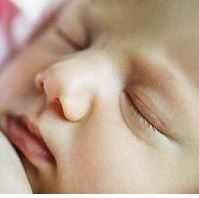Article
Best Regimen to Stop HIV Transmission to Newborns Is Also Risky
Author(s):
There is an optimal drug regimen for preventing HIV positive mothers from infecting their newborns. But it comes with more adverse events.

Researchers have identified a more efficacious antiretroviral therapy (ART) regimen to prevent transmission of HIV from mother to child.
But it was also associated with more adverse events.
Research conducted by Mary Fowler, MD, of the Department of Pathology at Johns Hopkins University School of Medicine, and colleagues, was published in the New England Journal of Medicine on November 3, 2016.
The researchers detailed the Promoting Maternal and Infant Survival Everywhere (PROMISE) trial, including results through week 1 postpartum in the article. Enrollment in the study began in 2011 and included participants from 14 sites in seven countries. “The PROMISE trial compared open-label strategies and included sequential randomization to one of three regimens, with postpartum randomization at six to 14 days to maternal ART or infant prophylaxis during breast-feeding and ‘maternal health’ randomization of women receiving ART to continue or stop ART after breast-feeding cessation or birth,” say the researchers.
According to the researchers, the women were randomized into one of three groups: “zidovudine plus intrapartum single-dose nevirapine with six to 14 days of tenofovir and emtricitabine postpartum (zidovudine alone; zidovudine, lamivudine, and lopinavir-ritonavir (zidovudine-based ART); or tenofovir, emtricitabine, and lopinavir-ritonavir (tenofovir-based ART).”
There were 3,490 mother and infant sets included in the analysis. The researchers found that while “ART regimens had significantly lower rates of transmission than zidovudine alone (0.5% vs. 1.8%),” but they add, “both ART regimens were associated with higher rates of adverse events than zidovudine alone.”
Thus, “the PROMISE trial showed superior efficacy of triple-drug ART, as compared with zidovudine plus single-dose nevirapine, for the prevention of mother-to-child transmission,” but also brought about higher rates of adverse events.
The researchers conclude, “Our findings emphasize the need for continued research to assess ART in pregnancy to ensure safer pregnancies for HIV-infected women and healthier outcomes for their uninfected infants.
Related Coverage:
PROMISE: 2 Strategies to Prevent Perinatal HIV Transmission





